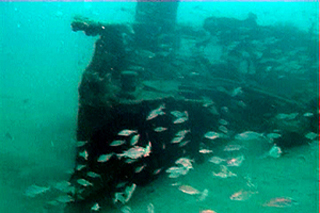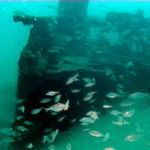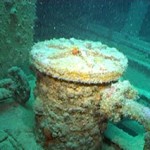SCOTLAND

The Scotland, a Norwegian-flagged stern-drive coal ship, in 1938, loaded with 850 tons of iron pyrite in Hinojedo and bound for France, was surprised by a strong swell when it crossed the Suances bar and the cornet at the mouth of la Traviesa de Adentro, which caused it to deviate and collide with some stones on the banks of the channel. In his attempt to reach the capital, the waterway in the bilge caused by the collision prevented him from continuing beyond Cabo Mayor. The crew had to evacuate in the lifeboats. The “Scotland” sank to a depth of about 48 meters, curiously a few fathoms from where her twin, the “Río Miera” would sink 13 years later, two miles from Cabo Mayor. She rests on a sandy bottom. The holds are practically under a thick layer of sand, with the stern and bow sticking out along with some remains of the control deck. The swarm of twisted iron, which make up the remains of the Scotland, is the favorite home of huge conger eels, accompanied by lobsters. It is also a meeting point for crabs, spider crabs and small crabs, as well as octopuses of a good size and countless pouts. The dive is considered a technique, so the experience of the diver and the equipment must be consistent with this type of dive.
Source: www.mourosub.com
LOCATION
Autonomous Community: Cantabria
Provincia: Cantabria
Localidad: Santander
Centers
- Center: Mourosub Diving Center http://www.mourosub.com/portal/
- Center: Pedreña Diving Center http://www.buceopedrena.es/
REQUEST DETAILS
Apelativo: Scotland
Año del hundimiento: 1938
Causas: Vía de agua
Año de construcción: 1919
Lugar: Holanda
Eslora: 51
Manga: 8
Puntal (altura): 34
Profundidad máxima: 48
Profundidad mínima: 45


